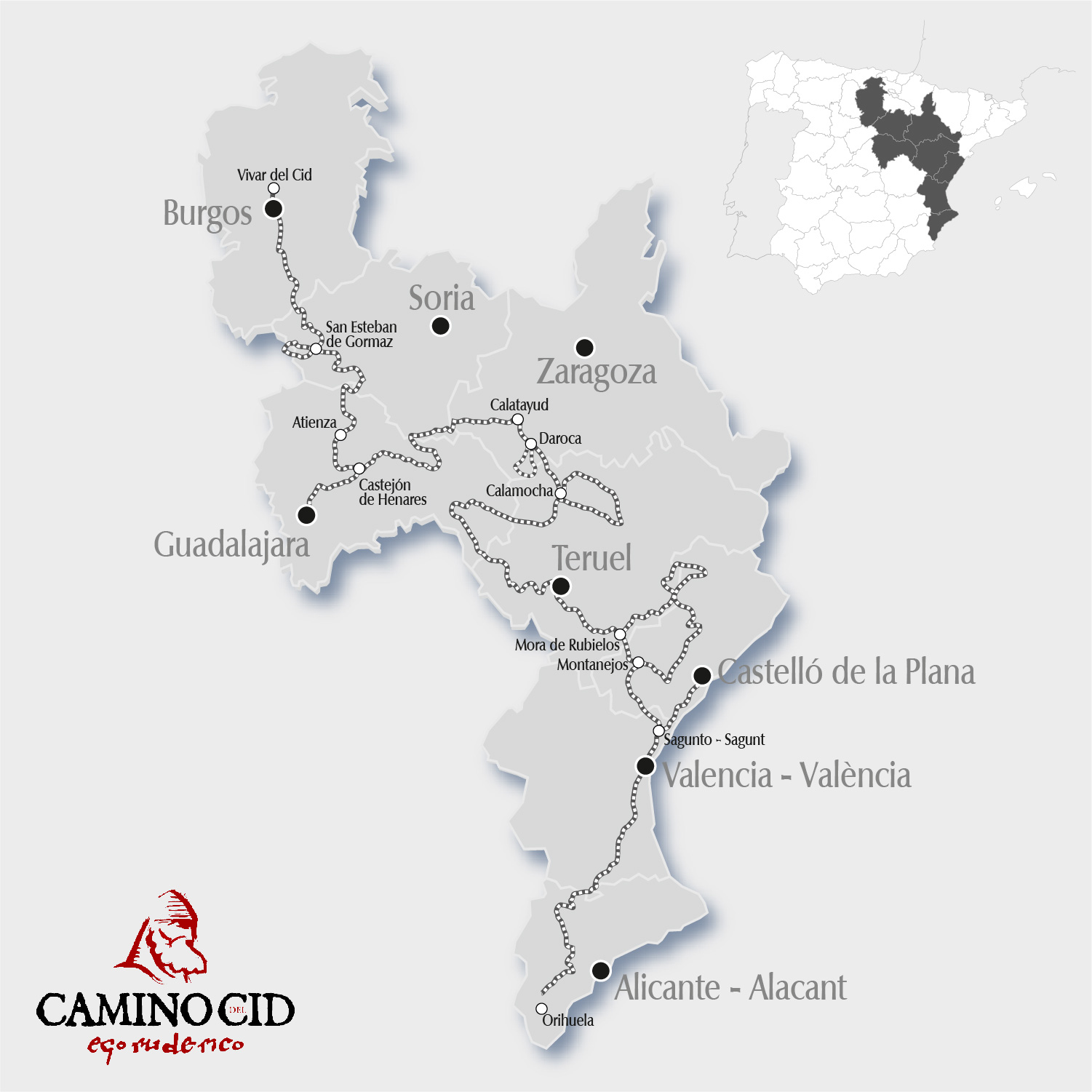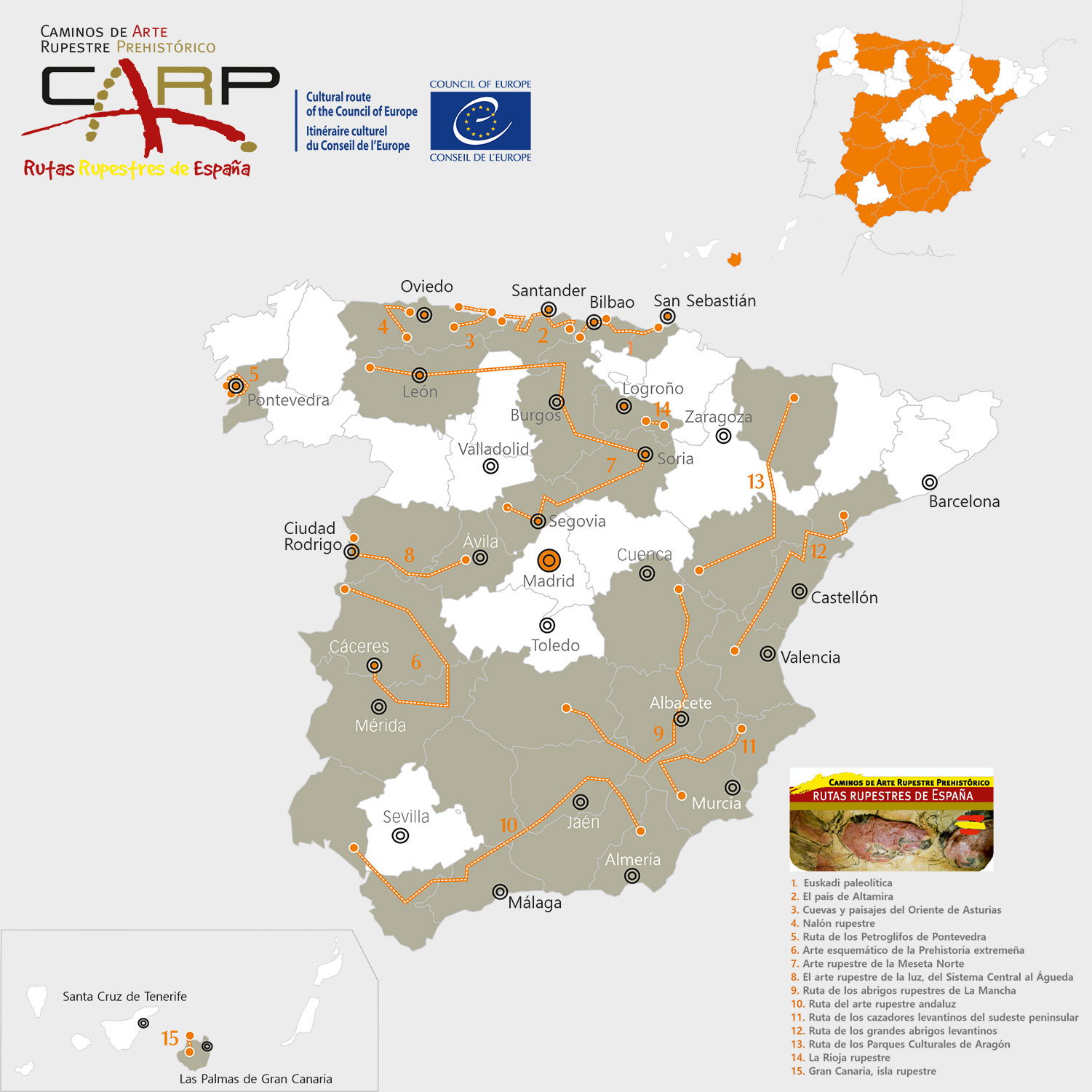Camino del Cid
A legendary journey through medieval Spain
Camino del Cid is a tourist and cultural route that crosses Spain from the north-west to the south-east, following the legendary footsteps of El Cid Campeador, the famous 11th-century medieval Spanish knight who was made a hero thanks to a poem.
This way takes you past the places, locations and castles that appear in Cantar de Mio Cid, a great Spanish epic poem written in the late 12th century, which narrates the adventures of El Cid from the time he was banished from Castile until his death as the Prince of Valencia.
Owing to its total length (about 1,400 kilometres of footpaths and 2,000 kilometres of roads), it is divided into 11 thematic sections of between 50 and 300 km that are interlinked. The different sections can be travelled by car or motor-bike, by bike on secondary roads, on MTB bikes along trails, and on foot.
All the routes are signposted, and on www.caminodelcid.org travellers will find all the information they need for their journey: maps, tracks, travel guides for all kinds of travellers, accommodation, tourist offices, and so on.
On the route, travellers can discover eight World Heritage sites dating back to the Middle Ages, 40 places designated as cultural-artistic sites by the Spanish government, over 200 castles, 70 natural spaces, as well as 20 festivals of national and international interest and an enormously rich and varied gastronomy.
Camino del Cid is an eminently rural route, through many small and quiet villages in vast natural surroundings; places with a medieval atmosphere and friendly, welcoming people.
Information provided by: www.spainculturalroutes.com
Prehistoric Rock Art Trails
Spanish Rock Art Routes
The Council of Europe Cultural Route ‘Prehistoric Rock Art Trails’ includes over 100 major rock art destinations in Spain of great scientific, cultural, artistic and archaeological interest, all open to the appreciation and enjoyment of European and world society. Today, over two million visitors a year come to the sites where the first inhabitants of our species left their transcendental rock art, an art form full of symbolism based on spiritual beliefs and countless references to nature, which shaped the first cultural landscapes in the Iberian Peninsula.
Therefore, Spain adds to the cultural tourism offer in Europe some of the most unique visitable rock art destinations on the continent, including sites, museums, interpretation centres and archaeological/cultural parks. Many of these places are small rock art sites (a cave, a rock-shelter, a rock in the open air, a small interpretation centre, etc.) but others consist of important tourist infrastructures where it is possible to visit large archaeological sites with spectacular art, such as Ekainberri, Altamira, Tito Bustillo, Teverga, Campo Lameiro, Siega Verde, Maltravieso, Dolmen de Soto, Minateda, Villar del Humo, Abrigos del Pozo de Calasparra, Bicorp, Gáldar Painted Cave, Cultural parks of the Rivers Martín and Vero, Albarracín Cultural Park, La Valltorta-Gasulla, etc. Up to 15 routes have been designed in Spain to discover the first art of humankind and the incredible landscapes – underground and above ground – where it is located.
Information provided by: www.spainculturalroutes.com
More information
Complementary information for your visit to Albarracín



